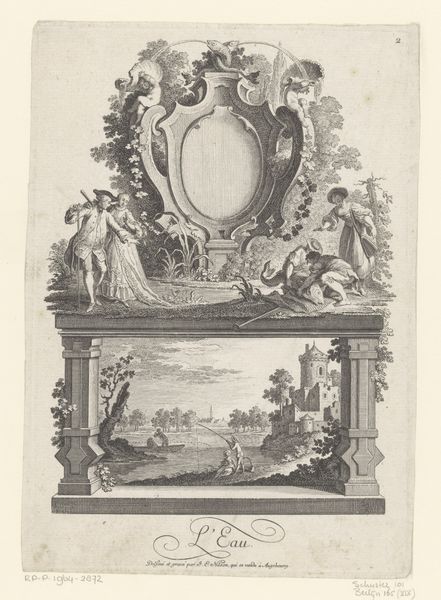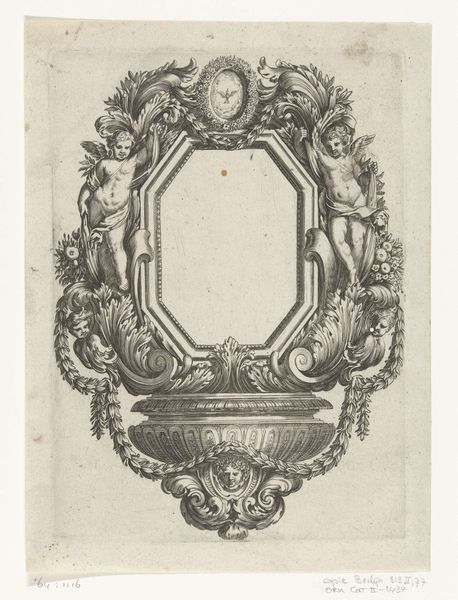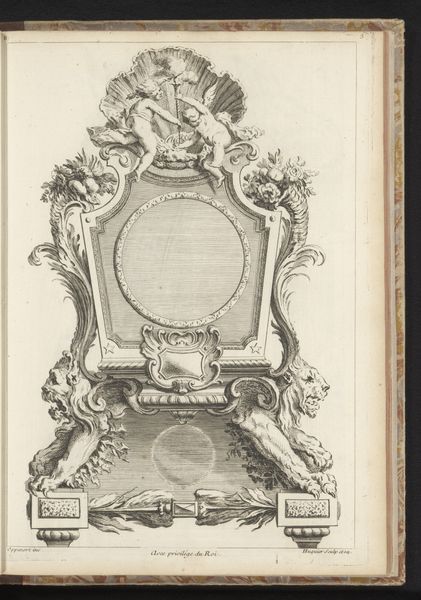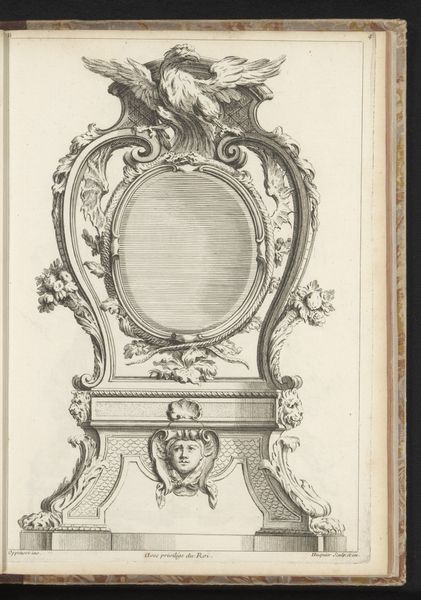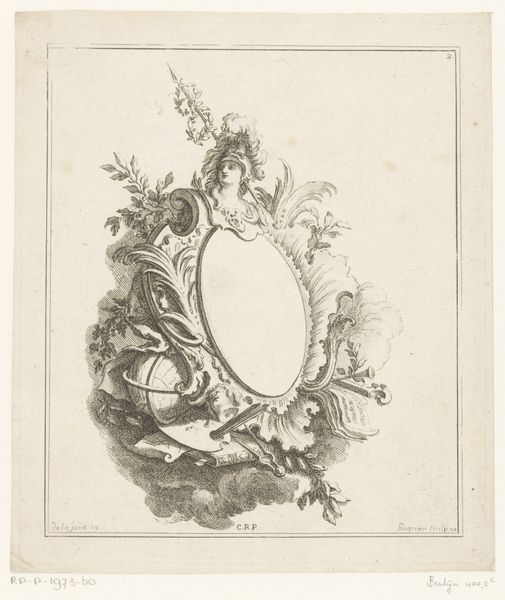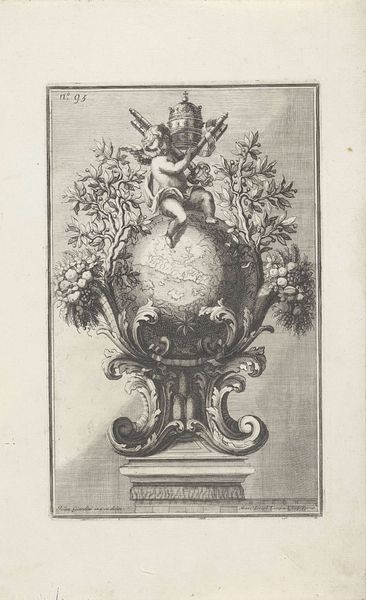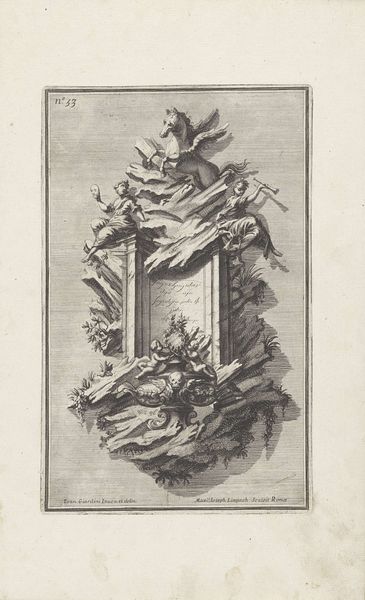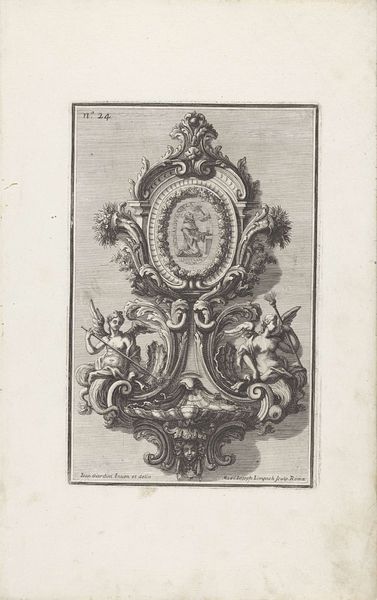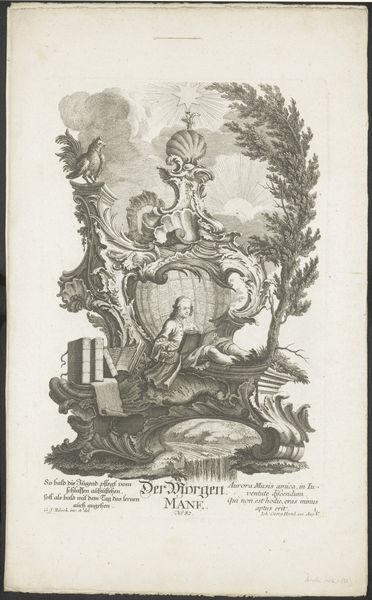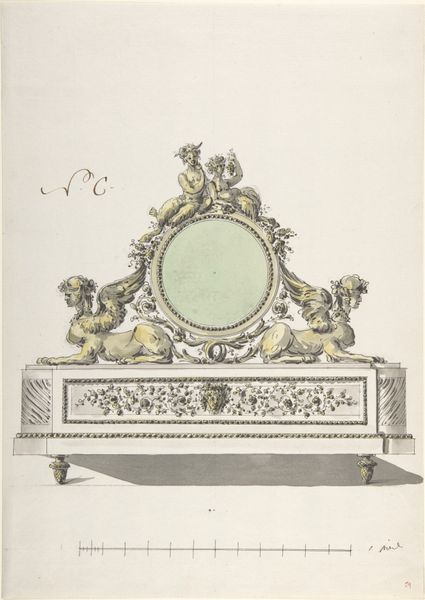
drawing, engraving
#
drawing
#
baroque
#
pen-ink sketch
#
line
#
engraving
Dimensions: height 323 mm, width 227 mm
Copyright: Rijks Museum: Open Domain
Curator: This drawing, likely conceived between 1725 and 1750, comes from the hand of Gabriel Huquier and is titled "Ontwerp voor een klok met thema jacht"—Design for a Clock with a Hunting Theme. Editor: The first thing I notice is the starkness of the lines. The clock's envisioned embellishments are richly detailed, aren’t they? The intricate interplay of light and shadow, all rendered in pen and ink, feels very precise and balanced. Curator: Indeed. Huquier's design, now held at the Rijksmuseum, speaks volumes about the societal embrace of leisure and opulence in the Baroque era, particularly as it pertained to the aristocratic classes. The integration of the hunting theme tells us about the role that this sport had in signifying class, wealth, and power, no? Editor: Certainly. And consider how the composition guides the eye: from the eagle with its horn at the apex, drawing the gaze downward through foliage and lounging canines, towards that central clock face – the void seems ready to measure time itself! Curator: Note too how Huquier utilizes familiar symbols, specifically through his illustration of an ornate hunting trophy which adorns the lower half of this sketch. The engraving embodies the way visual cues about power operated back then. Also of key interest, in my view, are the implications of creating objects with the aesthetic appeal to a small minority in society; to who was this appeal aimed? Editor: Agreed. This is also very much a study in contrasting textures - smooth against rough, natural against man-made. Even within the limitations of the ink, the artist masterfully captures the varying weights and feels, using line variation to create depth and substance. The artist had a careful grasp on material depiction, which is a formal hallmark. Curator: These material references absolutely emphasize the social hierarchies present at the time of creation. By paying careful attention to its cultural origins, we understand not only what's depicted, but how its meanings were generated in and through differential social contexts. Editor: It’s remarkable to consider how much is communicated here simply through line and form. The barest suggestion of shape becomes a world in itself. Curator: Exactly, it’s both an aesthetic achievement and an archive of cultural values from centuries past. Editor: Yes, a perfect embodiment of a design-based social vision of the past.
Comments
No comments
Be the first to comment and join the conversation on the ultimate creative platform.
